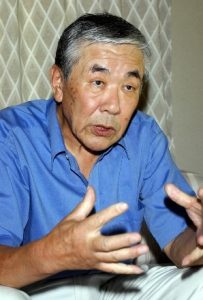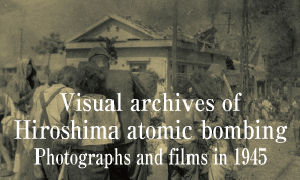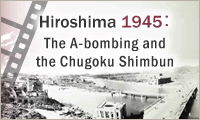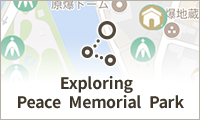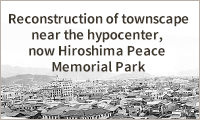Today marks Hiroshima A-bomb anniversary: Former student at Second Middle School, which lost 321 first-year students, donates personal account of bombing to Memorial Hall
Aug. 6, 2002
Account written for deceased classmates describes “strange silence, darkness, and collapse of school buildings in front of me”
One of the few surviving classmates at Hiroshima Prefectural Hiroshima Second Middle School (present-day Kanon High School) which, in the atomic bombing, lost 321 of its first-year students who had been engaged in building-demolition work, has written a personal account for the first time about his A-bombing experience. Still suffering from a sense of “guilt” for having escaped death, he said, “I hope to repay my deceased friends.” He described in the writing memories that had been locked away inside and donated the account to the Hiroshima National Peace Memorial Hall for the Atomic Bomb Victims, located in Hiroshima City’s Naka Ward, which opened its doors on August 1.
On the day of the bombing, August 6, 1945, Koji Wada, 69, a retiree who now lives in the area of Mukainada-shinmachi in Hiroshima’s Minami Ward, was at school around 1.8 kilometers from the hypocenter to accompany his friend in an upper grade who was unable to help in the work due to an injury he had suffered. Separated from his classmates, who had been mobilized for building-demolition work in the former area of Nakajima-shinmachi (in Hiroshima’s present-day Naka Ward), the two boys were engaged in independent study at school. The bombing happened as he waited alongside a charcoal-fired truck for the second school period to begin.
Mr. Wada wrote in his account, “The soil in the fields in front of me was blown up into the air by the blast from the bombing. As I continued to watch, I saw the soil on the ridges in the fields disappear, leaving only large, coarse stones. At that point, the flash and blast from the bombing stopped, transforming into a strange silence and night-like darkness. I witnessed the moment of simultaneous collapse of three school buildings standing 100 meters in front of me.”
After managing to make it back to his home, he went around the area of Nakajima-shinmachi asking about the whereabouts of his classmates who had been engaged in work there.
His account continued. “In the evening, three friends returned home as a result of a search by their families. All were burned over their entire bodies, with their faces swollen, showing no recognizable sign of their previous appearance. One said in a faint voice, ‘Wada, you were lucky.’ Another friend said, ‘Please get revenge for us.’ When I went to see them again the following morning, all three had passed away.”
Because of day after day of exhaustion, he had taken a break from the building-demolition work on the day of the bombing. His sense of guilt about that permeates the personal account of his A-bombing experience.
“When I visited all the families, I was incapable of saying anything while listening to their mothers say, ‘You were lucky, but my son…,’ turning speechless in front of their sons’ lifeless bodies. I was filled with a sense of guilt for being alive and standing there.”
He added, “I don’t know why but something inside of me prevented me from meeting the surviving families. In the middle of the night, after the incense offerings had burned down, I would go [to the memorial monument for the A-bomb victims of Second Middle School] with my wife and quietly put my hands together in prayer for them.”
The turning point for him was a series of articles in the Chugoku Shimbun three years ago titled “Record of Hiroshima — Photographs of the Dead Speak” featuring the Hiroshima Second Middle School and, with that, Mr. Wada began to reach out to other friends in the same grade. He found that slightly more than 20 classmates were still alive.
On August 6, Mr. Wada will attend the memorial service for A-bomb victims of Hiroshima Second Middle School, held on the left bank of Honkawa River in Peace Memorial Park.
(Originally published on August 6, 2002)

